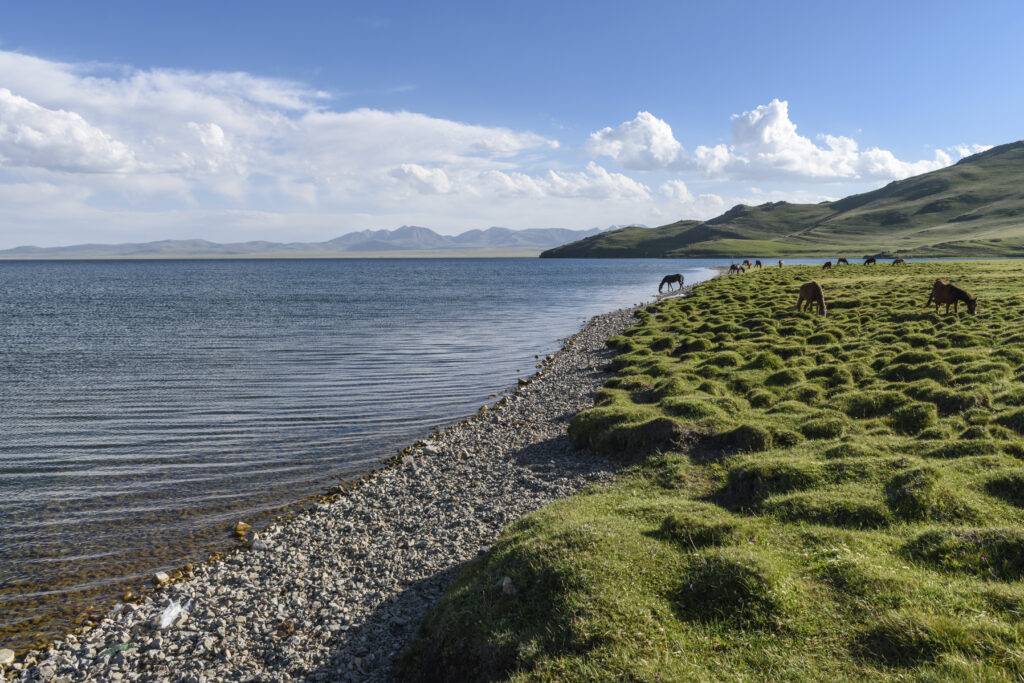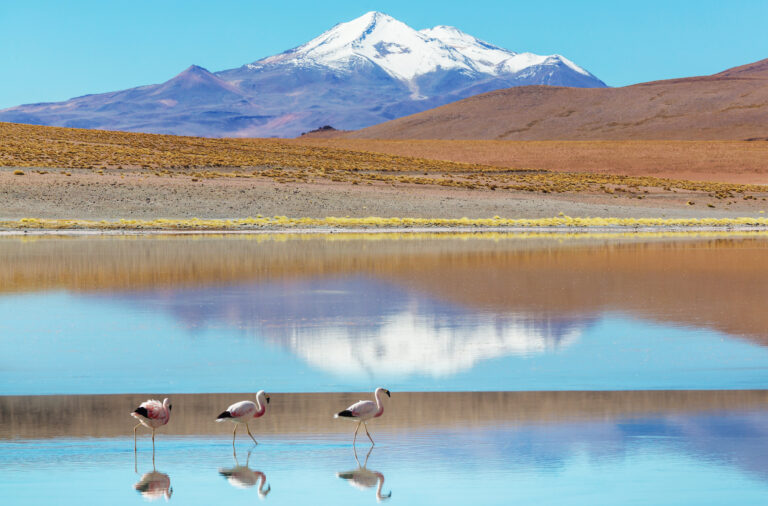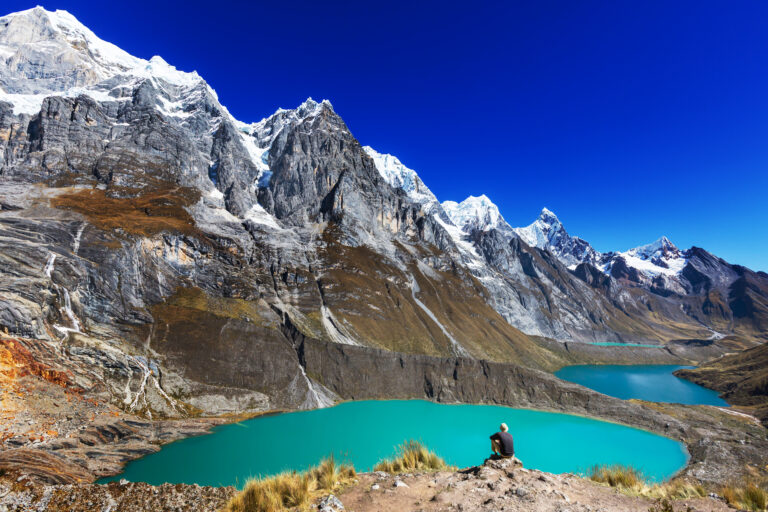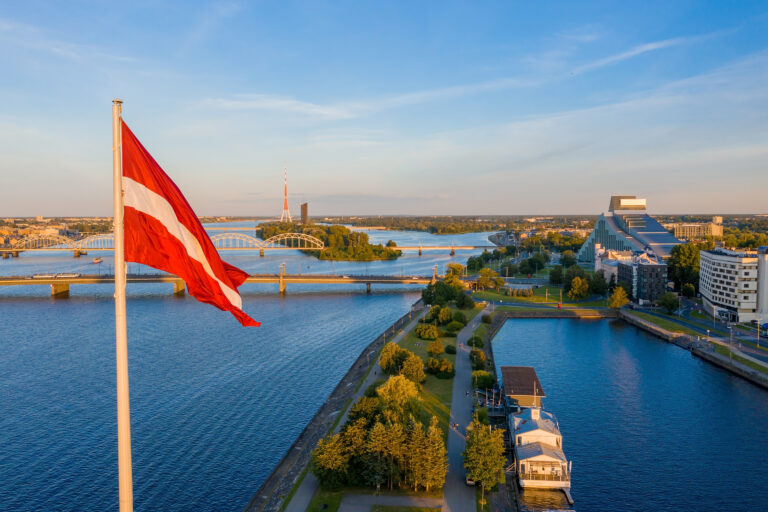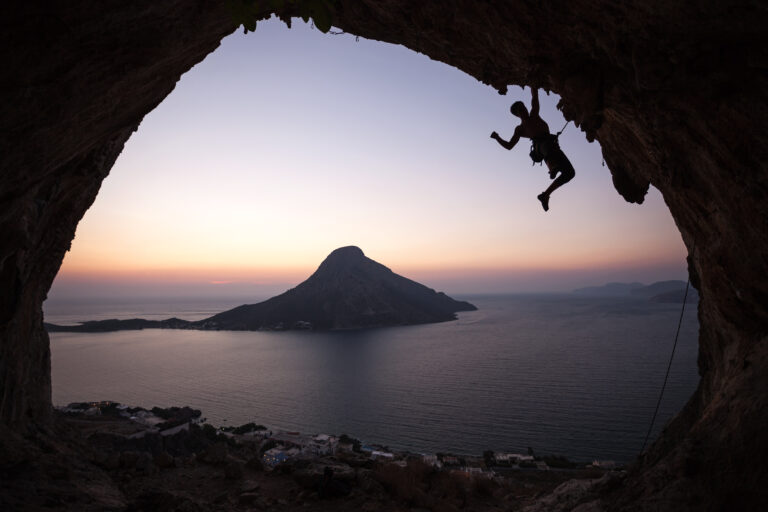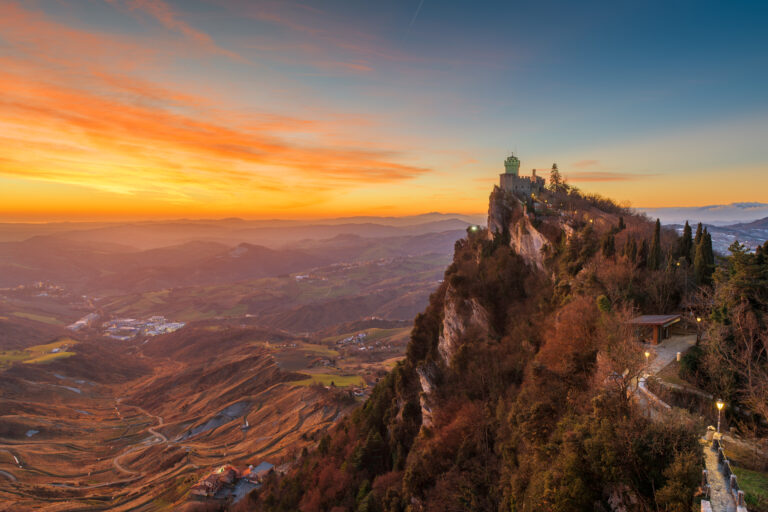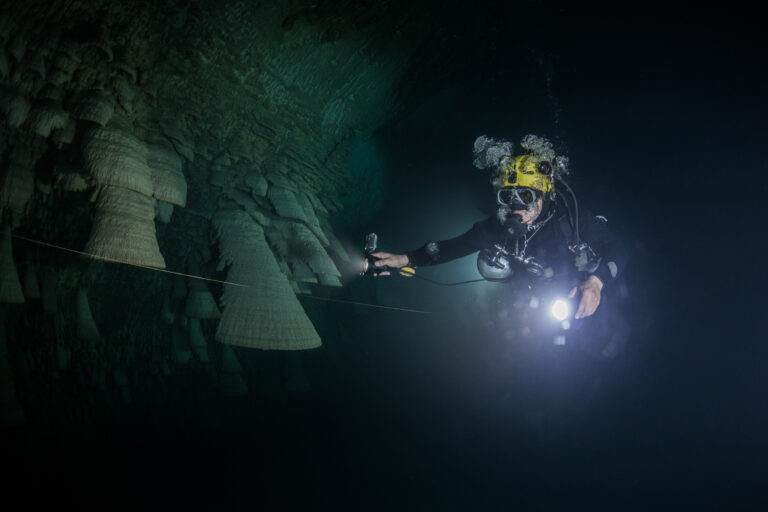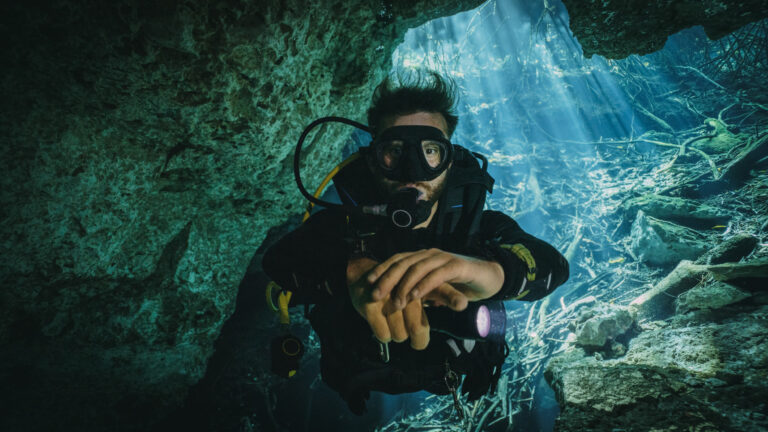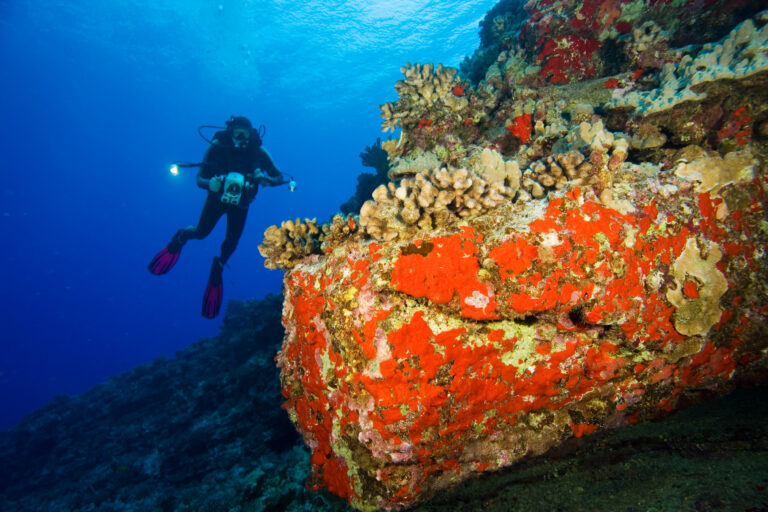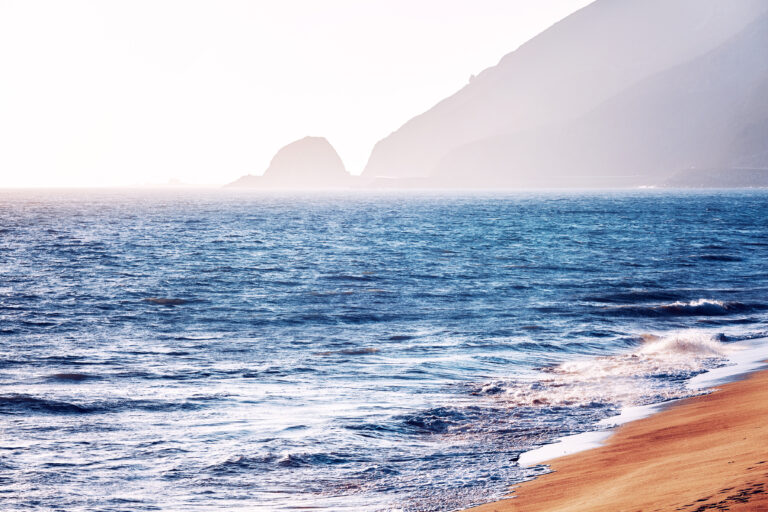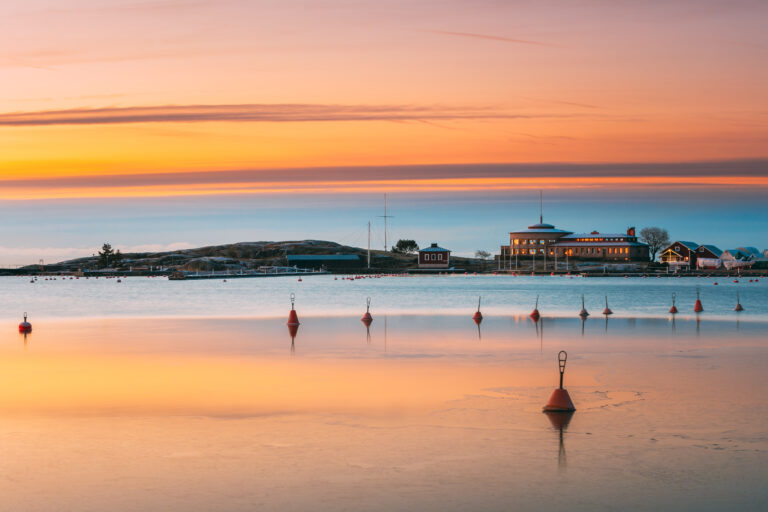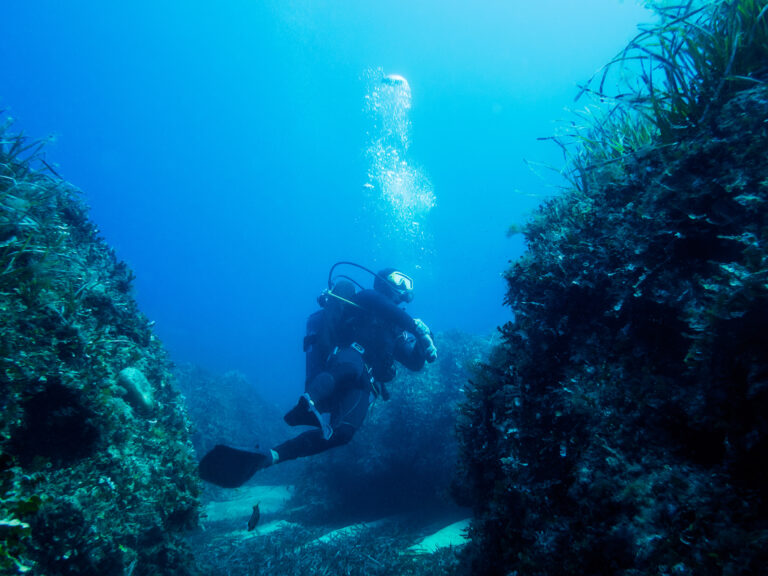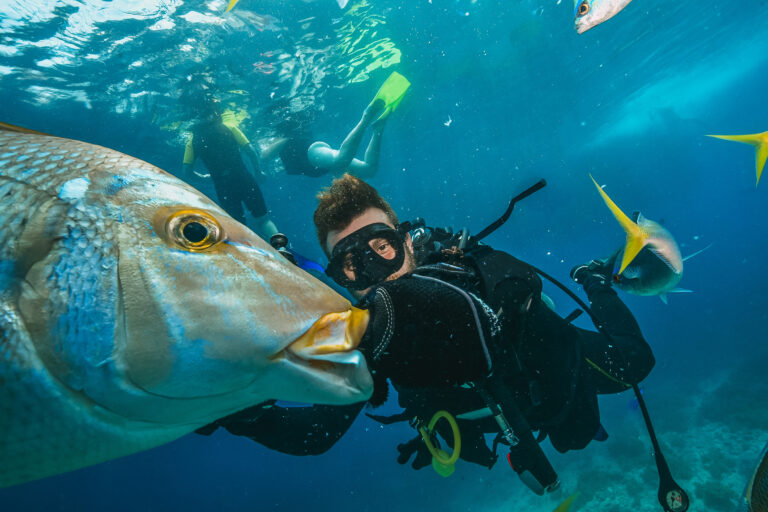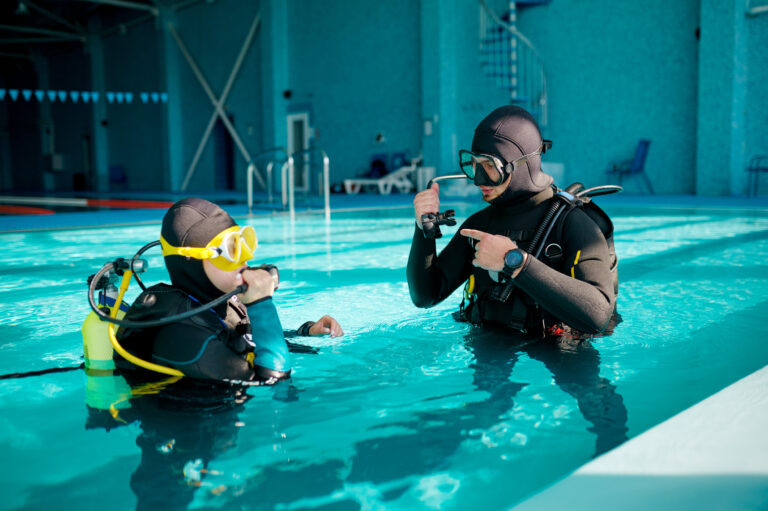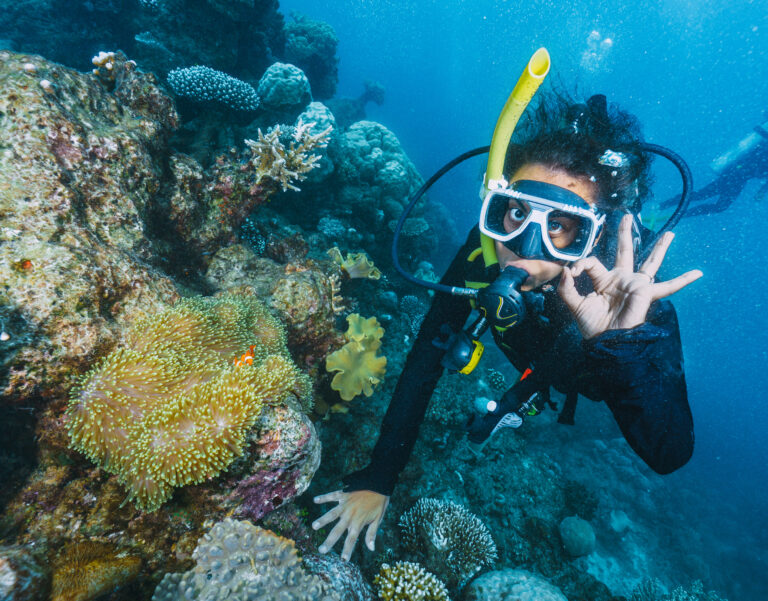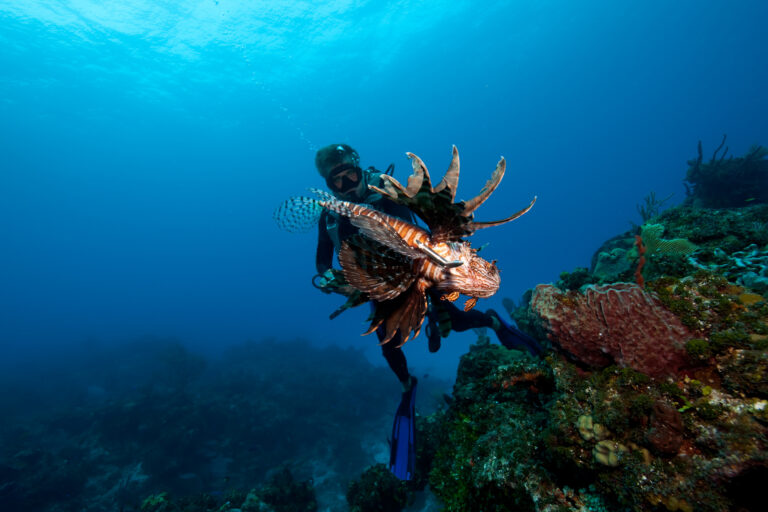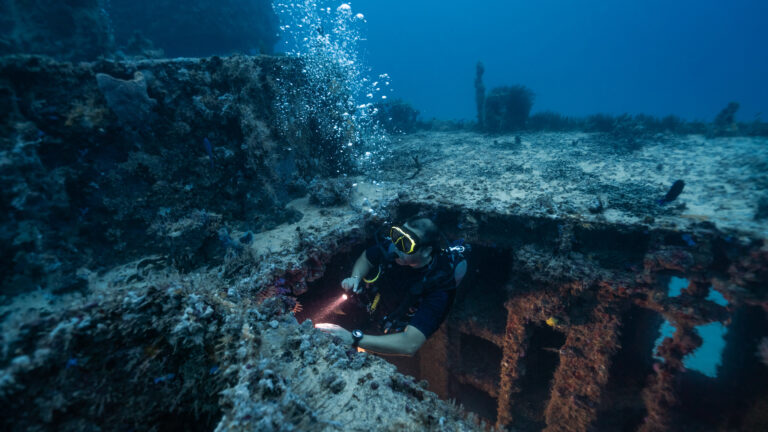SCUBA DIVERS’ TRAVEL GUIDE TO Kyrgyzstan
If you are looking for a unique and adventurous scuba diving destination, Kyrgyzstan might be the perfect choice for you. This landlocked country in Central Asia is home to stunning mountain scenery, pristine lakes, and diverse wildlife. Kyrgyzstan offers scuba diving opportunities in its alpine lakes, such as Lake Issyk-Kul, the second largest saline lake in the world, and Lake Song-Kul, a high-altitude lake surrounded by nomadic yurts. You can explore the underwater wonders of these lakes, such as ancient ruins, shipwrecks, and endemic fish species. You can also enjoy the cultural and natural attractions of Kyrgyzstan, such as hiking, horseback riding, skiing, and visiting historical sites. Kyrgyzstan is a hidden gem for scuba divers who want to experience something different and adventurous.
LOCATION AND GEOGRAPHY
Kyrgyzstan, a landlocked nation in Central Asia, may not be the first destination that comes to mind for scuba diving enthusiasts, but its unique geography offers a surprising underwater adventure. Nestled among the towering peaks of the Tien Shan and Pamir mountain ranges, Kyrgyzstan is home to the celestial Issyk-Kul Lake, the second-largest saline lake and the tenth-largest lake in the world by volume. Issyk-Kul, meaning “warm lake” in the Kyrgyz language, is a remarkable body of water that never freezes, despite its altitude of 1,607 meters above sea level. The lake’s clear waters provide visibility for divers to explore its diverse aquatic ecosystem and the remnants of ancient settlements submerged along its shores. With a length of 182 kilometers and a width of up to 60 kilometers, Issyk-Kul’s vast expanse offers ample opportunities for both novice and experienced divers to discover the hidden treasures of Kyrgyzstan’s underwater landscape.
VISA AND ENTRY REQUIREMENTS
Before planning your scuba diving adventure in the landlocked mountainous beauty of Kyrgyzstan, it is essential to understand the visa and entry requirements. As of the current guidelines, many nationalities can enter Kyrgyzstan visa-free for periods ranging from 30 to 90 days, including citizens of the United States, European Union, Canada, Australia, and New Zealand. For those who do require a visa, Kyrgyzstan offers the convenience of obtaining an e-visa through a straightforward online process, which is valid for tourism-related activities, including scuba diving in the country’s high-altitude lakes. Ensure your passport has at least six months of validity from the date of entry and at least one blank page for stamps. Additionally, while Kyrgyzstan does not mandate any specific vaccinations for entry, it’s wise to be up-to-date with routine vaccinations and check with your local travel health clinic for any recommended health precautions. Always verify the latest visa requirements and travel advisories from your home country’s foreign affairs department or the Kyrgyzstan embassy well in advance of your trip, as policies can change.
GETTING TO Kyrgyzstan
Getting to Kyrgyzstan for an unconventional scuba diving experience is an adventure in itself, as this landlocked nation is nestled in the heart of Central Asia, bordered by Kazakhstan, Uzbekistan, Tajikistan, and China. The most common entry point for international travelers is through the Manas International Airport near the capital city of Bishkek, which is serviced by several airlines offering flights from major cities across Europe, Asia, and the Middle East. Overland routes are also possible from neighboring countries, though they require careful planning due to varying visa regulations and border conditions. Once in Kyrgyzstan, divers can venture to the high-altitude Lake Issyk-Kul, the second-largest saline lake in the world, known for its clear waters and unique underwater landscapes. While Kyrgyzstan may not be the first country that comes to mind for scuba diving, its pristine alpine lakes offer a unique diving experience that is off the beaten path for those willing to explore the depths of this mountainous region.
BEST TIME TO DIVE
Kyrgyzstan, a landlocked nation in Central Asia, may not be the first destination that comes to mind for scuba diving enthusiasts, but its high-altitude Lake Issyk-Kul is a hidden gem worth exploring. The best time to scuba dive in Kyrgyzstan’s Lake Issyk-Kul is during the summer months, from June to September, when the weather is warm and the water temperatures are comfortable, ranging from 18°C to 24°C (64°F to 75°F). During this period, the visibility in the lake can reach up to 20 meters, offering clear views of the unique underwater landscapes and endemic species. The lake remains relatively calm, and the outside temperatures are pleasant, making it an ideal time for both beginners and experienced divers to enjoy the underwater beauty of this mountain-fringed lake. It’s important to note that outside of these months, the region can become quite cold, and the diving conditions may not be as favorable due to lower temperatures and reduced visibility.
ACCOMMODATION OPTIONS
In the landlocked nation of Kyrgyzstan, scuba diving enthusiasts will find accommodation options that cater to a range of preferences, primarily situated around the country’s alpine jewel, Lake Issyk-Kul. This vast, mountain-fringed lake, renowned for its clear waters and unique underwater flora and fauna, is dotted with resorts, guesthouses, and yurt camps that offer convenient access to diving spots. Divers can opt for the comfort of modern resorts in towns like Cholpon-Ata or Karakol, which often provide on-site diving equipment rentals and excursions. For a more immersive experience, traditional yurt camps along the southern shore allow divers to stay close to nature, with the added benefit of experiencing Kyrgyz hospitality and culture. Budget travelers will appreciate the hostels and homestays in nearby villages, where local families welcome guests with warm Kyrgyz hospitality. Regardless of where you choose to stay, the accommodations around Lake Issyk-Kul serve as ideal bases for both diving adventures and exploring the stunning landscapes of Kyrgyzstan.
DIVE OPERATORS AND DIVE SHOPS
In the landlocked expanse of Central Asia, Kyrgyzstan might not be the first destination that springs to mind for scuba diving enthusiasts, yet this mountainous country offers a unique underwater experience in the alpine lakes nestled amidst its rugged terrain. Dive operators and shops in Kyrgyzstan are few and far between, with the most notable diving activity centered around Lake Issyk-Kul, the second-largest saline lake in the world after the Caspian Sea. This lake, renowned for its mild saline waters and picturesque mountain backdrop, is home to a handful of dive shops that cater to both beginners and experienced divers. These local operators are well-versed in the peculiarities of high-altitude diving and provide specialized equipment and guidance to ensure a safe and enjoyable dive. They offer a range of services, from certification courses to guided dives where one can explore submerged forests, relics, and even the ruins of ancient settlements. Given the limited number of dive shops, it is advisable to arrange your diving excursions in advance, particularly during the peak summer months when the waters are most inviting.
TRANSPORTATION WITHIN Kyrgyzstan
While Kyrgyzstan may not be the first destination that comes to mind for scuba diving, its mountainous terrain offers unique freshwater diving experiences in alpine lakes like Lake Issyk-Kul. Transportation within Kyrgyzstan for scuba divers is an adventure in itself, as the country’s infrastructure is still developing. The most common way to travel is by road, with options ranging from renting a car to hiring a private driver or catching a ride on a marshrutka (shared minibus). For those heading to remote dive sites, a 4×4 vehicle is recommended due to rugged terrain and occasionally poor road conditions. Internal flights are limited but can be used to reach certain regions more quickly. It’s essential to plan your transportation well in advance, especially if you’re carrying bulky scuba gear, and to be prepared for a journey that’s as memorable as the diving itself.
CURRENCY AND PAYMENT METHODS
When planning a scuba diving trip to Kyrgyzstan, it’s important to note that the national currency is the Kyrgyzstani som (KGS). While major cities and tourist areas may accept credit cards, especially at larger hotels and dive shops, it’s advisable to carry cash for transactions in more remote diving locations around Lake Issyk-Kul and other less urbanized areas. ATMs are widely available in cities like Bishkek and Osh, but can be scarce elsewhere, so withdrawing sufficient cash before heading out to dive sites is prudent. Currency exchange services are readily available at banks and exchange bureaus, particularly in the capital. It’s also worth mentioning that bargaining is common in local markets, but less so in established dive shops. Always ensure you have small denominations for smaller purchases and tips. Keep in mind that while US dollars and Euros might be accepted in some places, the exchange rate may not be in your favor, so using local currency is generally the best option.
LANGUAGE AND COMMUNICATION
In the landlocked nation of Kyrgyzstan, scuba diving enthusiasts will find themselves immersed not only in the stunning underwater landscapes of high-altitude lakes like Issyk-Kul but also in a rich tapestry of cultural and linguistic diversity. The official language is Kyrgyz, a Turkic language written in Cyrillic script, which is spoken alongside Russian, a remnant of the Soviet era and still widely used as a lingua franca. While English may not be commonly spoken, especially in more remote diving locations, local dive operators often have staff who can communicate in Russian or basic English. It is advisable for divers to learn a few key phrases in Kyrgyz or Russian to facilitate smoother interactions with local residents and dive professionals. Additionally, carrying a waterproof phrasebook or translation app can be invaluable. Underwater, communication transcends spoken language, with divers relying on universal hand signals to convey messages and ensure safety during their aquatic explorations.
LOCAL CULTURE AND ATTRACTIONS
Kyrgyzstan, a landlocked nation in Central Asia, may not be the first destination that comes to mind for scuba diving enthusiasts, but its high-altitude Lake Issyk-Kul is a hidden gem for adventurous divers. Beyond the unique experience of diving in one of the world’s largest alpine lakes, visitors are immersed in the rich tapestry of Kyrgyz culture. The local populace, primarily Kyrgyz with a mix of Russian and Uzbek influences, is known for their warm hospitality and nomadic traditions. Travelers can explore vibrant bazaars like the Osh Market in Bishkek, where the air is perfumed with spices and the colorful textiles are a feast for the eyes. The country’s history is showcased in attractions such as the Burana Tower, a minaret from the ancient city of Balasagun, and the petroglyphs at Cholpon-Ata. After a day of diving, one can indulge in traditional Kyrgyz cuisine, savoring dishes like beshbarmak or manty, often accompanied by the sounds of the komuz, a traditional stringed instrument. Kyrgyzstan’s blend of natural beauty and cultural depth offers an enriching backdrop to an underwater adventure.
CULTURAL ETIQUETTE AND TIPS
While Kyrgyzstan may not be the first destination that comes to mind for scuba diving, its mountainous terrain is home to stunning alpine lakes that offer unique freshwater diving experiences. When visiting Kyrgyzstan for scuba diving, it’s important to be mindful of local customs and cultural etiquette. Kyrgyz culture is hospitable and respectful, and as a guest, showing appreciation for their traditions will go a long way. Dress modestly when not in diving gear, especially in rural areas, and be prepared to remove your shoes when entering someone’s home. It’s customary to accept tea or food if offered as a sign of hospitality. When interacting with locals, a friendly demeanor and a few words in Kyrgyz or Russian can help build rapport. Always ask for permission before taking photos of people or religious sites. Environmental conservation is also valued, so ensure that you follow Leave No Trace principles while diving and exploring, keeping the pristine nature of Kyrgyzstan’s lakes intact for future visitors.
LOCAL LAWS AND REGULATIONS RELEVANT TO TOURISTS
Before plunging into the crystal-clear waters of Kyrgyzstan’s high-altitude lakes, scuba divers should be aware of the local laws and regulations that govern underwater activities in this landlocked nation. Kyrgyzstan requires divers to obtain a permit for diving in certain protected areas, such as the renowned Lake Issyk-Kul, which is a biosphere reserve. It is essential to respect the ecological regulations aimed at preserving the unique biodiversity of these aquatic ecosystems. Additionally, divers should only use services from licensed diving operators who adhere to safety standards and environmental guidelines. It is illegal to remove any historical artifacts or disturb the natural habitats within the lakes. Tourists must also ensure that they carry the appropriate visa and register with the local authorities if staying longer than five days. As regulations can change, it is advisable to check with the State Agency for Environmental Protection and Forestry and the local dive shops for the most current information before your dive.
SAFETY TIPS AND EMERGENCY CONTACTS
When planning a scuba diving trip to the enchanting lakes of Kyrgyzstan, safety should be your paramount concern. Due to the remote nature of diving locations like Lake Issyk-Kul, it’s essential to ensure that you are well-prepared for any situation. Always dive within your certification limits and be accompanied by a local, experienced guide who knows the specific conditions and potential hazards of the high-altitude environment. Before your dive, verify that your equipment is in good working order and that you have a dive plan including safety stops and decompression procedures if necessary. It’s crucial to be aware of the symptoms of altitude sickness and decompression sickness, given the elevation of the dive sites. Ensure that you have access to emergency oxygen on site and that you know the location of the nearest recompression chamber, which may be a considerable distance away in Bishkek. Keep handy the contact information for local emergency services and the DAN (Divers Alert Network) emergency hotline. Additionally, it’s advisable to have a means of communication such as a satellite phone, as cellular service may be unreliable or unavailable. Always inform someone onshore of your dive plan and expected return time. By taking these precautions, you can help ensure a safe and enjoyable diving experience in the stunning waters of Kyrgyzstan.
HEALTH AND TRAVEL INSURANCE
When planning a scuba diving trip to the enchanting mountain-fringed lakes of Kyrgyzstan, it is crucial to prioritize your health and travel insurance. Given the remote nature of diving locations such as Lake Issyk-Kul, ensure that your policy covers not only standard medical treatment but also includes provisions for hyperbaric chamber access and emergency evacuation, which may necessitate air transport to a facility with appropriate medical care. Due to the high altitudes at which these lakes are situated, divers should also be aware of the increased risk of altitude sickness and ensure their insurance covers treatment for such conditions. Additionally, verify that your policy extends to the specific activities you plan to undertake, as some insurers require additional coverage for adventure sports like scuba diving. Always carry proof of your insurance and emergency contact information with you, and consider registering with your embassy upon arrival for added safety. By taking these precautions, you can dive into Kyrgyzstan’s underwater marvels with peace of mind, knowing you are well-protected against unforeseen health and travel incidents.

